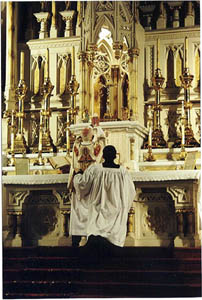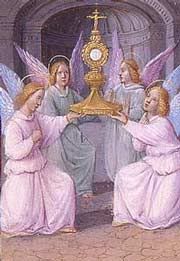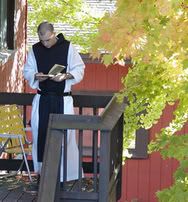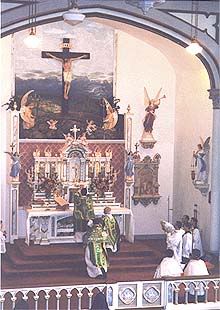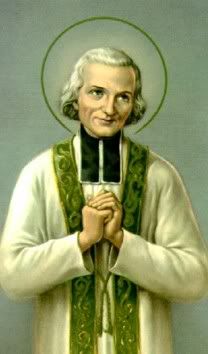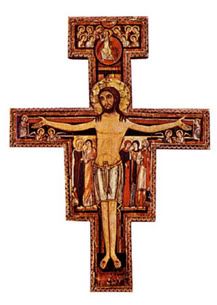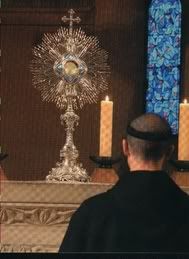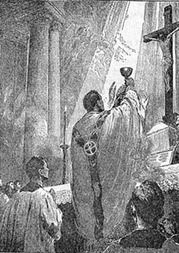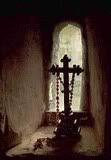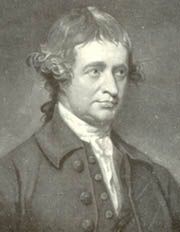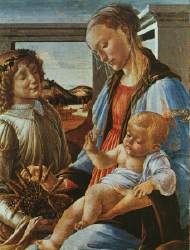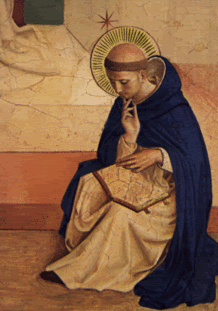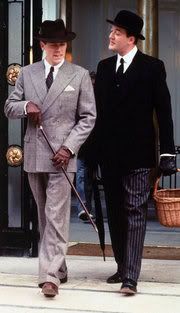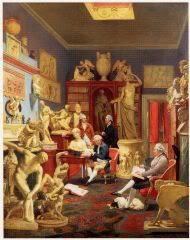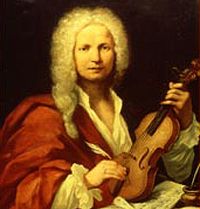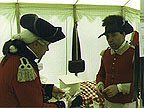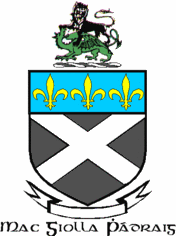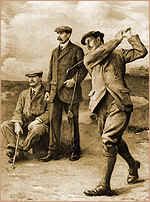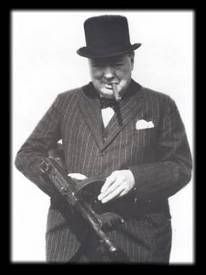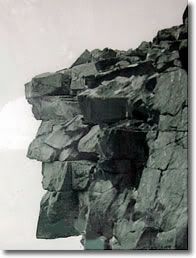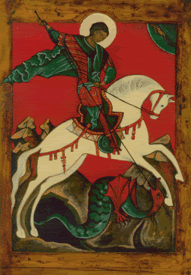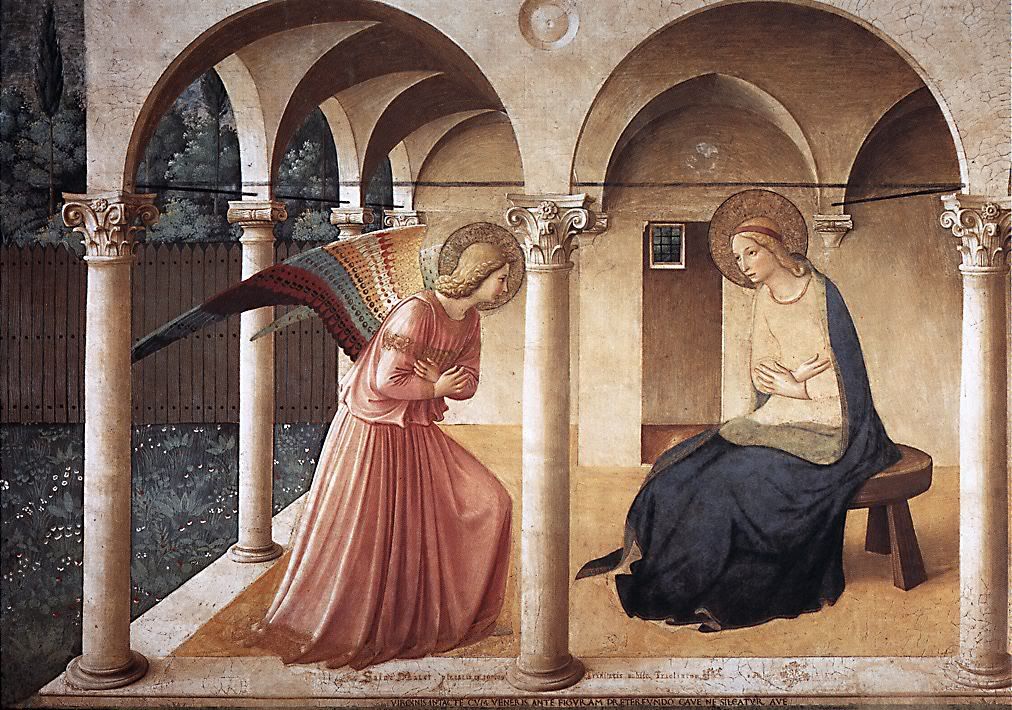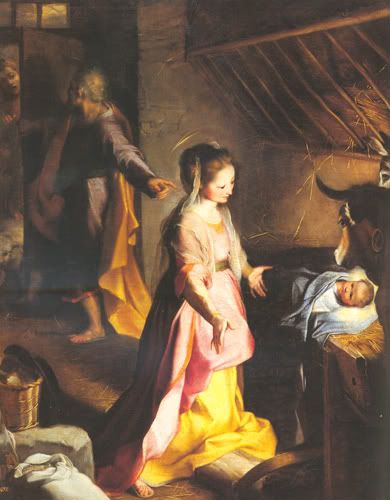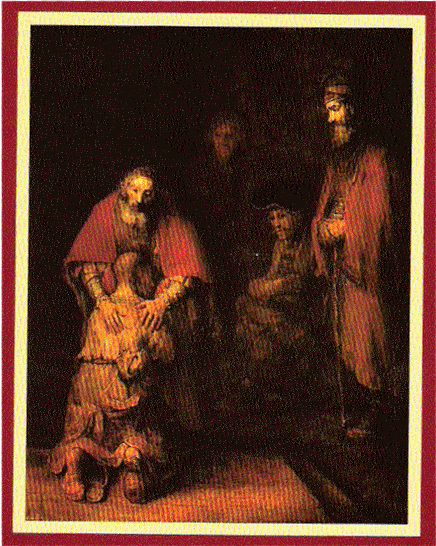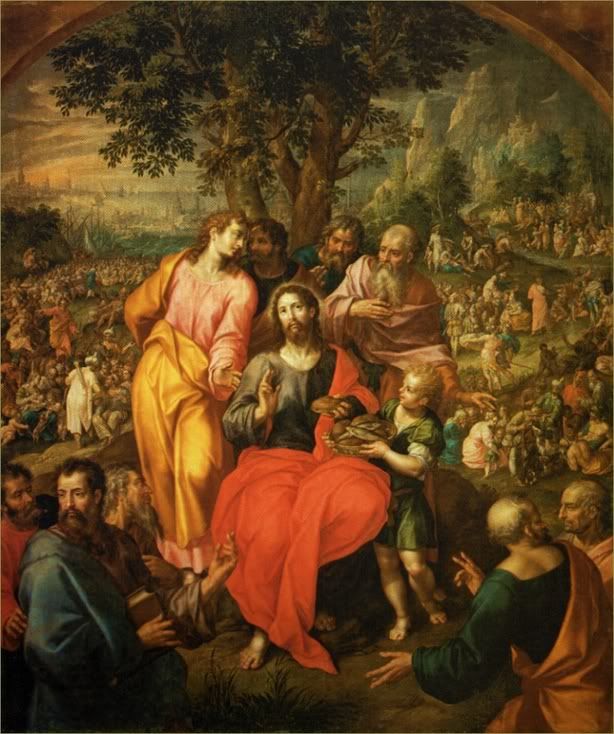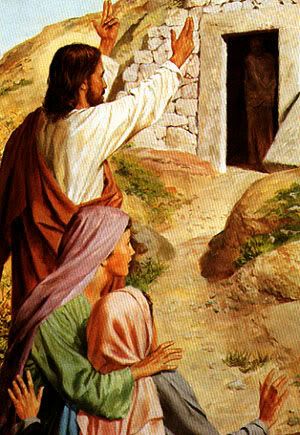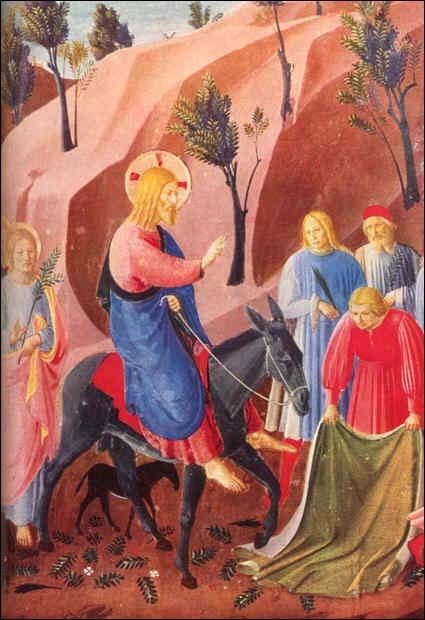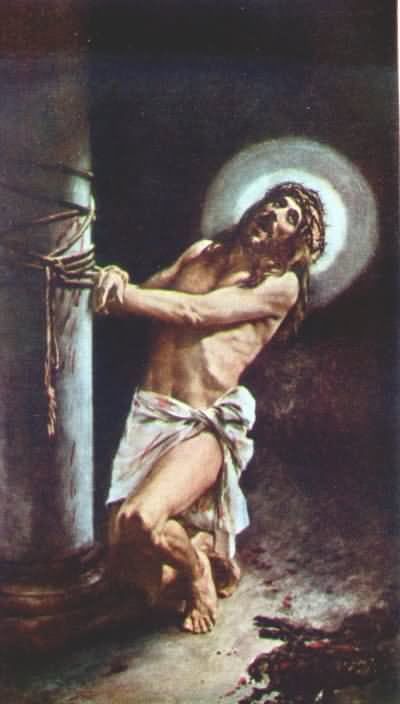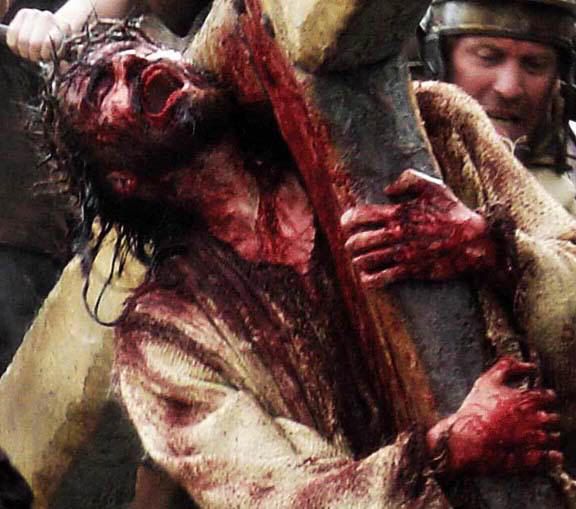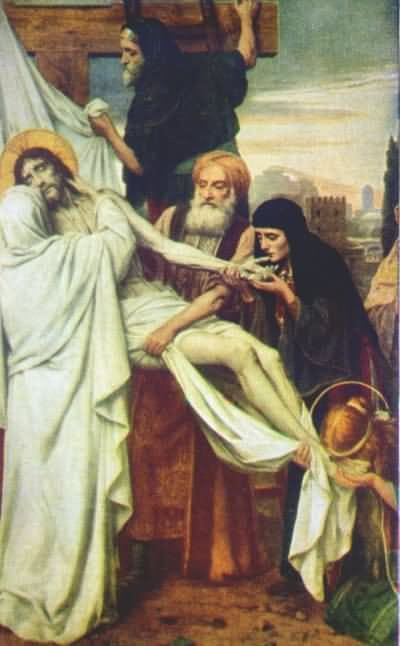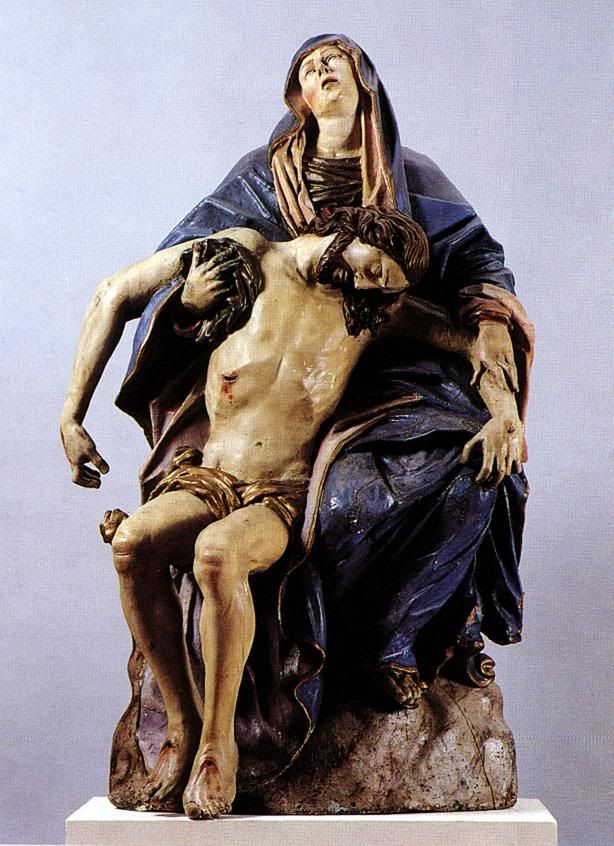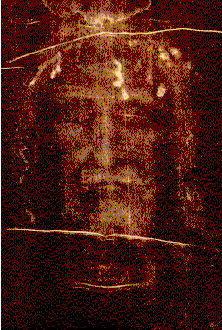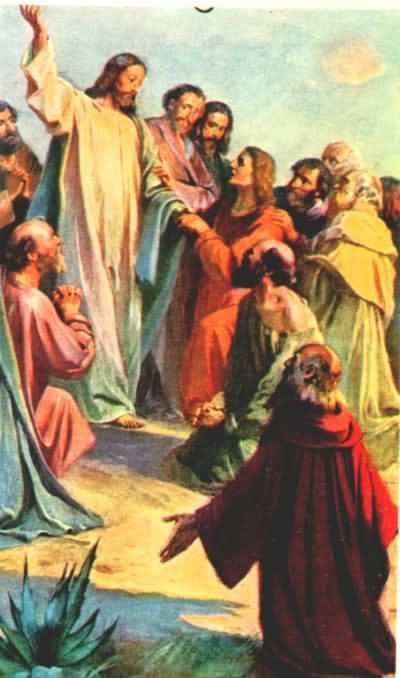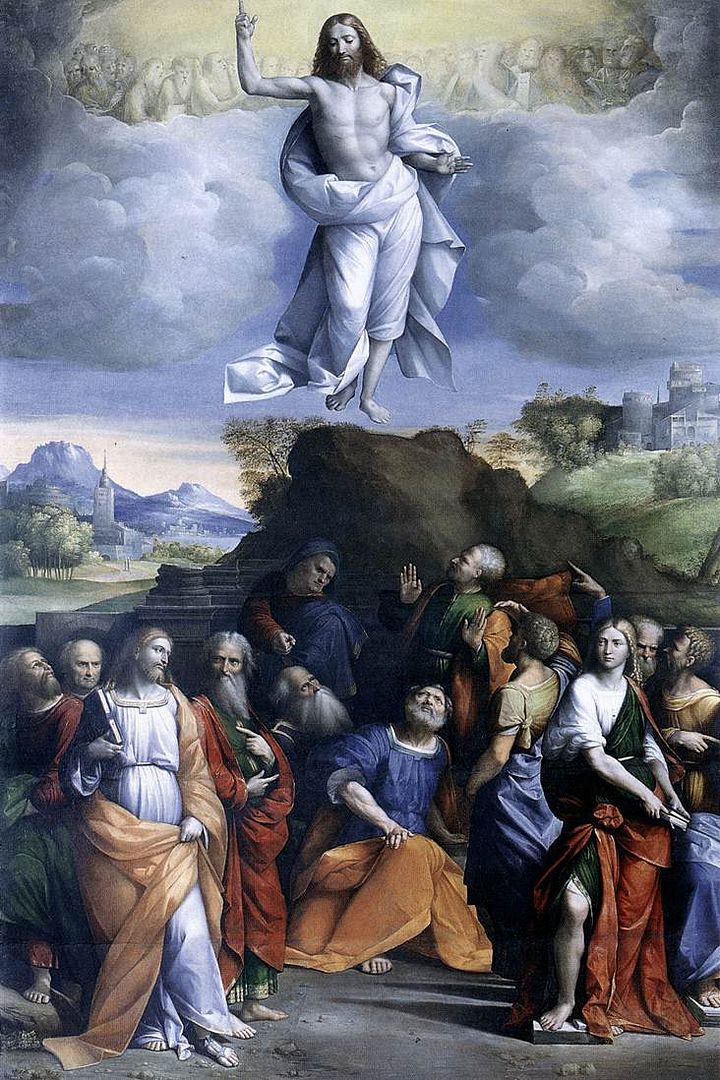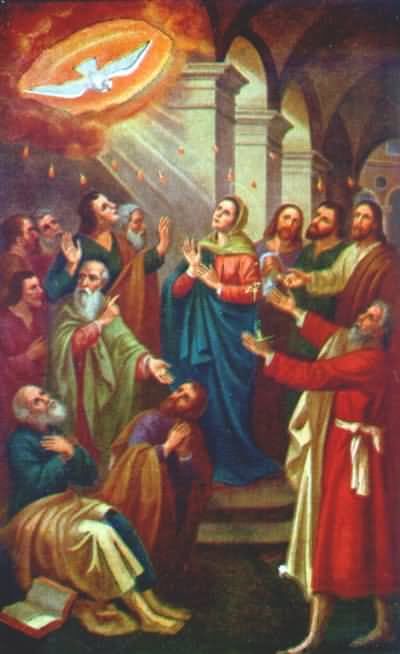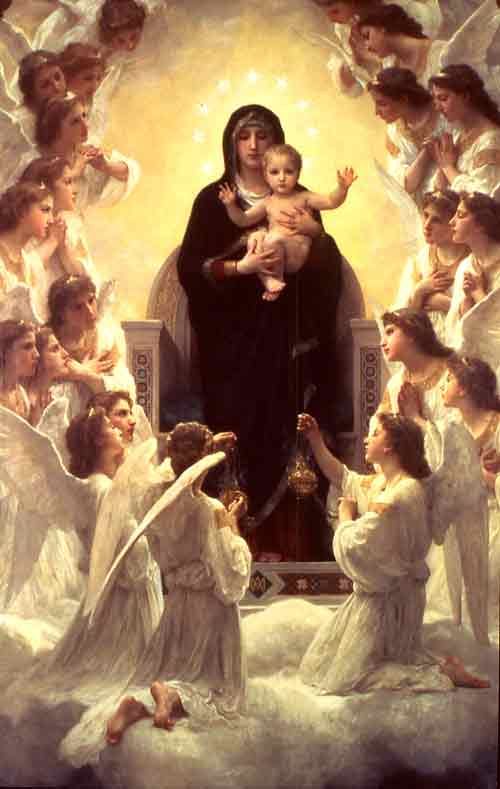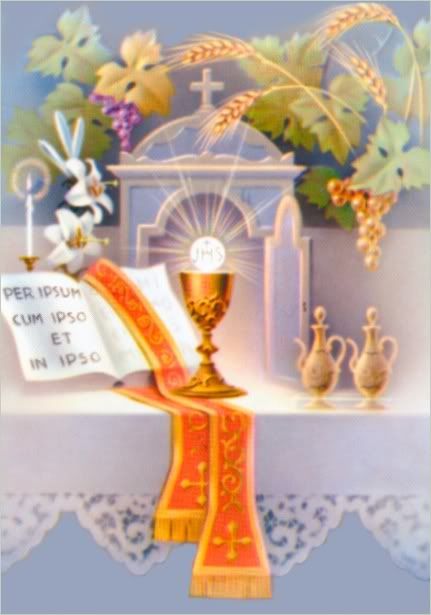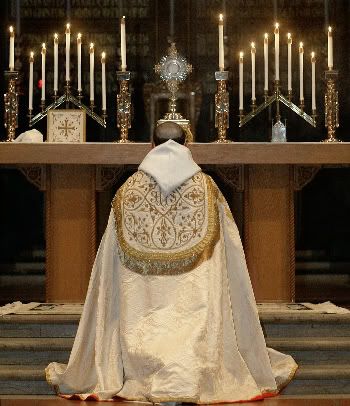Saturday, April 01, 2006
Let's Hope This One Is Not An April Fool's Joke
Recta Ratio's New Co-Hosts
As all of you know, I just can't be here 24/7/365 to cover the latest breaking news in the Catholic blogosphere and track down the images of the Catholic cultural tradition. So I have asked some other Catholics to take on co-hosting responsibilities.
Allow me to introduce them:

Our first co-host is very accomplished. She actually managed to speak in complete sentences at the age of 30. Once. Here she is in Rome covering the funeral of Pope John Paul the Great last April. She is a model, actress, dancer, gold-digger, and party-girl extrordinaire, which means she will be able to keep Recta Ratio readers up to date while I am sleeping, so please give a warm welcome to
Miss Anna Nicole Smith.

Our second co-host is well known to many of you. For those of you who think I'm not Traddie enough, or Evil enough to live up to the Evil Trad moniker, here is a cohost who certainly makes up for that. Sedevacantist, Holocaust denier, schismatic conspiracy nut, and father of superstar Mel Gibson, I introduce:
Hutton Gibson

And for those who think I'm too evil, too traddie, too hardcore Catholic, I have decided to provide a softer perspective from a distinguished Catholic theologian. This guy has been published more often than Charles Dickens, and has been on TV more than Babwa Wawas. I give you:
Father Richard McBrien (note absence of Roman collar).
April Fools!
Except Anna Nicole. She's for real. I hope.
Allow me to introduce them:

Our first co-host is very accomplished. She actually managed to speak in complete sentences at the age of 30. Once. Here she is in Rome covering the funeral of Pope John Paul the Great last April. She is a model, actress, dancer, gold-digger, and party-girl extrordinaire, which means she will be able to keep Recta Ratio readers up to date while I am sleeping, so please give a warm welcome to
Miss Anna Nicole Smith.

Our second co-host is well known to many of you. For those of you who think I'm not Traddie enough, or Evil enough to live up to the Evil Trad moniker, here is a cohost who certainly makes up for that. Sedevacantist, Holocaust denier, schismatic conspiracy nut, and father of superstar Mel Gibson, I introduce:
Hutton Gibson

And for those who think I'm too evil, too traddie, too hardcore Catholic, I have decided to provide a softer perspective from a distinguished Catholic theologian. This guy has been published more often than Charles Dickens, and has been on TV more than Babwa Wawas. I give you:
Father Richard McBrien (note absence of Roman collar).
April Fools!
Except Anna Nicole. She's for real. I hope.
April

April's Calendar image from Les Tres Riches Heures du Duc de Berry features the rejuvenation, mating, and new life of spring. The fields and trees have leafed out and greened up (this happens about 3 weeks earlier in Wesern Europe than in New England, where leafing out typically does not happen until May). Two young ladies are bending to pick violets. In the foreground, a couple, possibly including the Duke's granddaughter, who was engaged in 1410, are exchanging engagement rings in the presence of parents.
Important feasts observed during the month of April include:
1st St. Mary of Egypt, and Bl. Charles of Austria
3rd St. Richard of Chichester
4th St. Isidore of Seville
5th St. Vincent Ferrer
7th St. Jean Baptist de la Salle
9th St. Mary of Cleopas
13th St. Pope Martin I (martyr) and Bl. John Lockwood (martyr)
15th Bl. Damien deVeuster (Father Damien of Molokai)
16th Martyrs of Saragossa
20th St. John Payne and Bl. Francis Page and John Finch (martyrs)
21st St. Anselm of Canterbury
23rd St. George (martyr)
24th St. Ives
25th St. Mark the Evangelist
26th Our Lady of Good Counsel and St. Pope Cletus
27th St. Zita
28th St. Louis de Montfort
29th St. Catherine of Siena and St. Peter of Verona (martyr)
The First Friday of the month is Friday, April 7th.
The First Saturday of the month is Saturday April 1st.
The month begins in the liturigical season of Lent, but mid-way through the month is Holy Week and the beginning of Paschal Time.
Passion Sunday is April 2nd.
Palm Sunday is April 9th.
Spy Wednesday is April 12th.
Maundy Thursday is April 13th.
Good Friday is April 14th.
Holy Saturday is April 15th.
Easter Sunday is April 16th.
Easter Monday is April 17th.
Divine Mercy (Low) Sunday is April 23rd.
Hock Monday is April 24th.
Hock Tuesday is April 25th.
The intentions of our Holy Father Pope Benedict XVI for the month of April, 2006 are:
General:
That the individual, social and political rights of women may be respected in every nation.
Missionary:
That the Church in China may carry out its evangelizing mission serenely and in full freedom.
The Divine Mercy Novena begins on Good Friday, typically at the Hour of Mercy, 3pm, and continues until the vigil of Divine Mercy (Low) Sunday.
Friday, March 31, 2006
A Great Day In Boston
Near 70 degrees.
So here is another reenacting photo:

I'm somewhere in that tangle. I'm the one in red!
So here is another reenacting photo:

I'm somewhere in that tangle. I'm the one in red!
Universal Indult?
Rorate Caeli is reporting (via an Italian news agency, so don't get too excited) that the Holy Father will, shortly after the April 7th meeting with heads of dicasteries, issue a universal indult for the Missal of 1962. This would, essentially, take the local bishops out of the gate-keeping role they have played with regard to allowing a traditional Latin Mass or not.
This is often a problem. For instance, In his ten years as Bishop of Fall River Diocese in southeastern Massachusetts, now-Cardinal O'Malley never permitted an indult Mass there. And many other dioceses have the same problem with more liberal bishops.
It is, of course, one of the two preconditions for reconciliation that the SSPX has set forth, though the Holy Father has, over the years, expressed his belief that the TLM ought to be available more widely and that its virtual suppression through the 1970s and 1980s was a mistake. That quite without consideration to the SSPX issue.
And I agree that it ought to be handled that way, without reference to the SSPX. There is no sense letting the SSPX tail wag the traditional Latin Mass dog. I also think the excommunications of SSPX leaders ought to be lifted, as an act of charity and good will on the part of the Holy See.
Then, I think either an Apostolic Administration, or Personal Prelature for the Traditonal Latin Mass ought to be established, perhaps headed by Cardinal Hoyos de Castrillon, with newly appointed FSSP, CRNJ, and ICKSP bishops to assist him. That Vatican office would act as a referee between local bishops and their TLM communities, and head up the reconciliation of the remaining SSPXers. For instance, with such an office in place in Rome, that would be the end of Cardinal O'Malley's plans to close Boston's indult parish, Holy Trinity, because Boston's TLM community would have a Big Brother in Rome looking out for our interests. It would also protect the rights of priests to say the traditional Mass, as well as the rights of monastic and convent communities to use the Roman Breviary.
With all that done, if the SSPX does not shed its antagonism to Rome and the Councils (I use the plural deliberately, as the Holy Father has signaled that the Second Vatican Council, which has been the exclusive guiding light for Catholics far too much, has to be read and interpreted in light of other councils, in light of Church history and tradition), if they "stay out" on the issue of ecumenism, then they truly are disobedient, prideful, and schismatic and deserve to be cast outside Holy Mother the Church, where there is only wailing and gnashing of teeth. In fact, I think these moves would undermine the SSPX leaders, by giving their flocks ample opportunity to come over to full communion with Rome without their leaders.
If this report is correct, the Holy Father, recognizing the inherent strength, beauty, and holiness of traditional liturgy and devotions, their drawing power for young Catholics and those seeking the Truth, has opted for traditionalism without the traditionalists' leaders. And that might be very wise for many reasons relating to future harmony within the Church.
This is often a problem. For instance, In his ten years as Bishop of Fall River Diocese in southeastern Massachusetts, now-Cardinal O'Malley never permitted an indult Mass there. And many other dioceses have the same problem with more liberal bishops.
It is, of course, one of the two preconditions for reconciliation that the SSPX has set forth, though the Holy Father has, over the years, expressed his belief that the TLM ought to be available more widely and that its virtual suppression through the 1970s and 1980s was a mistake. That quite without consideration to the SSPX issue.
And I agree that it ought to be handled that way, without reference to the SSPX. There is no sense letting the SSPX tail wag the traditional Latin Mass dog. I also think the excommunications of SSPX leaders ought to be lifted, as an act of charity and good will on the part of the Holy See.
Then, I think either an Apostolic Administration, or Personal Prelature for the Traditonal Latin Mass ought to be established, perhaps headed by Cardinal Hoyos de Castrillon, with newly appointed FSSP, CRNJ, and ICKSP bishops to assist him. That Vatican office would act as a referee between local bishops and their TLM communities, and head up the reconciliation of the remaining SSPXers. For instance, with such an office in place in Rome, that would be the end of Cardinal O'Malley's plans to close Boston's indult parish, Holy Trinity, because Boston's TLM community would have a Big Brother in Rome looking out for our interests. It would also protect the rights of priests to say the traditional Mass, as well as the rights of monastic and convent communities to use the Roman Breviary.
With all that done, if the SSPX does not shed its antagonism to Rome and the Councils (I use the plural deliberately, as the Holy Father has signaled that the Second Vatican Council, which has been the exclusive guiding light for Catholics far too much, has to be read and interpreted in light of other councils, in light of Church history and tradition), if they "stay out" on the issue of ecumenism, then they truly are disobedient, prideful, and schismatic and deserve to be cast outside Holy Mother the Church, where there is only wailing and gnashing of teeth. In fact, I think these moves would undermine the SSPX leaders, by giving their flocks ample opportunity to come over to full communion with Rome without their leaders.
If this report is correct, the Holy Father, recognizing the inherent strength, beauty, and holiness of traditional liturgy and devotions, their drawing power for young Catholics and those seeking the Truth, has opted for traditionalism without the traditionalists' leaders. And that might be very wise for many reasons relating to future harmony within the Church.
Ecce Homo!

Our Lord after the scourging. This new plaster statue is available here. There is also a version without the crown of thorns.
Compare the statue to this still from The Passion Of the Christ:

Either is a good image to contemplate on a Lenten Friday.
Hat tip to Vive Christus Rex!
A Year's Mind
Terri Schiavo was judicially murdered by the Florida courts at the instigation of her estranged husband a year ago today by being starved of food and water.
Requiescat in pace.
Requiescat in pace.
An Anglo-Catholic Filk
A Tribute to Anglo-Catholics
(tune: Aurelia: The Church's One Foundation)
I like the first verse best.
Our church is mighty spikey with smells and bells and chants,
And Palestrina masses that vex the Protestants.
O happy ones and holy who fall upon their knees
For solemn Benediction and mid-week Rosaries.
(tune: Aurelia: The Church's One Foundation)
I like the first verse best.
Our church is mighty spikey with smells and bells and chants,
And Palestrina masses that vex the Protestants.
O happy ones and holy who fall upon their knees
For solemn Benediction and mid-week Rosaries.
Friday Of the Fourth Week Of Lent
Station Church: S. Eusebio all'Esquilino
Devotions for a Lenten Friday holy hour:
Dies Irae
Divine Mercy Chaplet
Seven Penitential Psalms
Prayer of St. Thomas More
Threnus Prayer of Saint Augustine
Devotions To the Holy Cross
Devotions for a Lenten Friday holy hour:
Dies Irae
Divine Mercy Chaplet
Seven Penitential Psalms
Prayer of St. Thomas More
Threnus Prayer of Saint Augustine
Devotions To the Holy Cross
Thursday, March 30, 2006
And Yes, That Last Entry Did Get the Blood Up a Bit
The weather is pleasantly warm. It is nearly Patriots' Day, and so the urge to put on a uniform and enjoy is strong now, as it is every early April.

Over the Hills And Far Away
Our 'prentice Tom may now refuse
To wipe his scoundrel Master's Shoes,
For now he's free to sing and play
Over the Hills and far away.
Over the Hills and O'er the Main,
To Flanders, Portugal, and Spain,
King George commands and we'll obey
Over the Hills and far away.
We all shall lead more happy lives
By getting rid of brats and wives
They'll scold and bawl both night and day -
Over the Hills and far away.
Over the Hills and O'er the Main,
To Flanders, Portugal, and Spain,
King George commands and we'll obey
Over the Hills and far away.
Courage, boys, 'tis one to ten,
But we return all gentlemen
All gentlemen as well as they,
Over the hills and far away.
Over the Hills and O'er the Main,
To Flanders, Portugal, and Spain
King George commands and we'll obey
Over the Hills and far away.

Over the Hills And Far Away
Our 'prentice Tom may now refuse
To wipe his scoundrel Master's Shoes,
For now he's free to sing and play
Over the Hills and far away.
Over the Hills and O'er the Main,
To Flanders, Portugal, and Spain,
King George commands and we'll obey
Over the Hills and far away.
We all shall lead more happy lives
By getting rid of brats and wives
They'll scold and bawl both night and day -
Over the Hills and far away.
Over the Hills and O'er the Main,
To Flanders, Portugal, and Spain,
King George commands and we'll obey
Over the Hills and far away.
Courage, boys, 'tis one to ten,
But we return all gentlemen
All gentlemen as well as they,
Over the hills and far away.
Over the Hills and O'er the Main,
To Flanders, Portugal, and Spain
King George commands and we'll obey
Over the Hills and far away.
The Amalgamation Of the Scottish Regiments

Mark at Irish Elk reminded me that the dreadful day has come. The Black Watch, the Argyle and Sutherland Highlanders, the Royal Scots Fusiliers, the Royal Scots, the King's Own Scottish Borderers, and the Highlanders (itself an amalgamation) have been amalgamated into a single Scottish regiment, the Royal Regiment of Scotland. Each battalion of that regiment will carry on the traditions of one of the above regiments.
As Army reductions go, this was not so bad as it could have been. The Connaught Rangers, and various other Irish regiments, were disbanded after the creation of the Irish Free State in 1922. My own old re-enactment Regiment, the 10th Regiment of Foot, became the Royal Lincolnshire Regiment, and that regiment was amalgamated in the 1960s into the Royal Anglian Regiment. The Third Battalion of the Royal Anglians carries on the traditions of the Royal Lincolnshires.
But still, the degree to which the Labour government is unwilling to support the military is astonishing. If these reductions continue, the Royal Navy will consist of 6 garbage scows, the RAF of 8 Piper Cubs, and the British Army will only take the field when the Bobbies can be spared from the streets of London. There is no reason why such a large and populous country cannot maintain an army (including reserves) in peacetime of 50 infantry battalions, 30 armoured battalions, 12 artillery battalions plus support units, all equipped with up-to-date weapons and well-trained and disciplined. Except Labour hates the military, and whenever they want to save money that they could spend on more irresponsible social programs (irresponsible because they take personal responsibility from the individual) the military is always the first target.
It goes without saying that magnificent fighting traditions are being sacrificed on the altar of more money for national health care (a mistake that the US ought do anything to avoid copying from our cousins across the Pond or up north).
All the Scottish Regiments have done magnificently, and have lustrous regimental histories. But the Black Watch, the old 42nd or Royal Highland Regiment of Foot stands out. They charged the French boldly at Fontenoy. They were slaughtered assailing Fort Ticonderoga. They helped put down Pontiac's Rebellion. They fought in most of the battles of the American Revolution (and one of its officers, John Peebles, has left behind the best British diary of the war). They fought under Wellington throughout the Spanish Peninsula, and helped him stop Bonaparte at Waterloo. And they have been there in every war since then. They have been deployed around Basra in the Iraq campaign of the War On Moslem Terror. They are not just historical curiousities, whose time on the chopping block of political economizing has come. They are real life excellent soldiers fighting today.

Officer of the Black Watch, 1745

The 42nd dealing with an Indian ambush at Bushy Run in 1763

The recreated Black Watch at the 225th anniversary of the Battle of Monmouth (1778/2003)

Recreated Highlanders leading a charge at Quebec in 2004

Mainstays of Wellington's Army in the Iberian Peninsula, corporal of the 42nd and private of the 92nd Gordon Highlanders

Black Watch piquet overwhelmed by Polish Lancers at Quatre Bras
The losses of the Black Watch in the assault on Fort Carillon/Ticonderoga on July 12, 1758, from Wikpedia:
The Black Watch was "first in the attack, and last in the retreat", and paid dearly with the loss of many lives and many severely wounded. However, due to the gallantry of the 42nd at Ticonderoga, letters of service were issued for adding a second battalion, and an order to make the regiment Royal, "as a testimony of his Majesty's satisfaction and approbation of the extraordinary courage, loyalty, and exemplary conduct of the Highland regiment."
The vacancies occasioned in the 42nd by the deaths at Ticonderoga were filled up in regular succession. The second battalion was to be formed of the three additional companies raised the preceding year, and of seven companies to be immediately recruited. One historical view was that the nation was highly satisfied with the conduct of the army; and the regret occasioned by the loss of so many valuable lives was alleviated by the hope, that an enterprise, so gallantly though unsuccessfully conducted, offered a fair presage of future success and glory.
The old Highland regiment having suffered so severely, and the second battalion being ordered on another service, (to the West Indies), they were not employed again this year.
42nd Highland Officers Killed (plus 9 sergeants, and 297 soldiers):
Major: Duncan Campbell of Inveraw.
Captain: John Campbell.
Lieutenants: George Farquharson; Hugh McPherson; William Baillie; and John Sutherland.
Ensigns: Patrick Stewart, son of Bonskied; and George Rattray.
42nd Highland Officers Wounded (plus 10 sergeants, and 306 soldiers):
Captains: Gordon Graham of Drainie; Thomas Graham of Duchray; John Campbell (of Strachur); James Stewart of Urrard; and James Murray of Strowen, son of Lord George Murray (and afterwards General).
Lieutenants: James Grant; Robert Gray; John Campbell; :William Grant; John Graham, brother of Duchray; Alexander Campbell; Alexander Mackintosh; Archibald Campbell; David Miller (Milne?); and Patrick Balneaves, son of Edradour.
Ensigns: John Smith; and Peter Grant.
That is nearly 650 casualties out of around 800 men who assaulted Fort Carillon that day.
Thursday Of the Fourth Week Of Lent
Station Church: Ss. Silvestro e Martino ai Monti
Devotions for a Lenten Thursday holy hour:
Dies Irae
Divine Mercy Chaplet
Seven Penitential Psalms
Prayer of St. Thomas More
Threnus Prayer of Saint Augustine
Devotion To the Holy Face
Devotions for a Lenten Thursday holy hour:
Dies Irae
Divine Mercy Chaplet
Seven Penitential Psalms
Prayer of St. Thomas More
Threnus Prayer of Saint Augustine
Devotion To the Holy Face
Wednesday, March 29, 2006
Second Possible John Paul II Miracle
Man cured of liver infection in the US. Wait and see if this is approved.
Requiescant In Pace
Two important figures of the Reagan Administration died this week. Caspar Weinberger, who was chief of the Office of Management and Budget under President Nixon, then Secretary of Defense under President Reagan. He was one of those primarily responsible for the defense build-up of the 1980s that buried the Soviet Union and laid the basis for successful military action in Panama, Kuwait, Serbia, Kosovo, Afghanistan, and Iraq. A formidibly great American. Also, Lynn Nofziger, political guru and some-time press spokesman for President Reagan. Nofziger, with his rumpled clothes and cigars was, along with Roger Ailes and the late Lee Atwater one of those I most admired and wished to emulate when I harbored dreams of being a political kingmaker. Two great conservatives exit the scene, and will be missed. Requiescant in pace.
The Recta Ratio Dope Slap Award, Second Recipient
The guy who came up with "Cosmic Body Prayer".
Check this nonsense out via The Catholic Caveman's Lair.
Looks like a cross between kindergarten exercise, and Falun Gong. Not appropriate for Catholic worship.
Here's a tip, man: first, clear your head of all the New Age crap that has encrusted your cranium since the 1960s. Then, get on your knees. It helps if you have a padded kneeler. At least it is more comfortable, though if you want to kneel on stone or something like that, consider it something called "mortification of the flesh," and offer it up. Make the Sign of the Cross. Still remember how to do that, right? Then fold your hands in front of you, chest high. You can either press palm and all five fingers of each hand together or interlock the fingers. I'm an interlocking fingers guy myself. Then say the Pater Noster. In German, English, or Latin. Slowly, and reverently, thinking about the words you are saying. Then make the Sign of the Cross again. Get up. And go about your business. No fluid body motions, just someone praying the real way.
It's not Romper Room, people, it is prayer time.
Check this nonsense out via The Catholic Caveman's Lair.
Looks like a cross between kindergarten exercise, and Falun Gong. Not appropriate for Catholic worship.
Here's a tip, man: first, clear your head of all the New Age crap that has encrusted your cranium since the 1960s. Then, get on your knees. It helps if you have a padded kneeler. At least it is more comfortable, though if you want to kneel on stone or something like that, consider it something called "mortification of the flesh," and offer it up. Make the Sign of the Cross. Still remember how to do that, right? Then fold your hands in front of you, chest high. You can either press palm and all five fingers of each hand together or interlock the fingers. I'm an interlocking fingers guy myself. Then say the Pater Noster. In German, English, or Latin. Slowly, and reverently, thinking about the words you are saying. Then make the Sign of the Cross again. Get up. And go about your business. No fluid body motions, just someone praying the real way.
It's not Romper Room, people, it is prayer time.
New "Catholic" BookStore To Open In North End
Via Save Holy Trinity Yahoo Group:
FATIMA MARIAN CENTER
GIFT & BOOK SHOP
GRAND OPENING APRIL 1ST
IN BOSTON'S HISTORIC NORTH END
by Denise M. Trias
BOSTON, MA- Sheehan's Church Goods Co. Inc. closed it's doors on Chauncy
Street in Boston recently and Catholics are now wondering where they can buy religious gifts and literature. This April, they can stop wondering as The Fatima Marian Center is opening it's doors in the Historic North End at 27 Thacher Street, Boston.
The gift shop will be selling Catholic books, CD's, videos, statues,
holy cards, scapulars, rosaries, medals and more. Two Catholic Missionary Sisters from the west coast, Marian Sisters of Mary Immaculate Queen, will be staffing the bookstore.
Currently, the Sisters reside in East Boston. They promote the message of Our Lady of Fatima and the Block Rosary, teach Adult Catholic Doctrine Classes, visit seniors in the neighborhood and cheer up the locals by passing out rosaries and scapulars. If you are driving through East Boston, you might catch a glimpse of the Sisters in their royal blue habit walking down the sidewalk, praying their rosary and stopping when the need calls to give a word of cheer.
The Grand Opening of The Fatima Marian Center in the North End will be April 1st, 11 a.m. to 6 p.m. Stop in and browse, visit with the Sisters and enjoy a cup of coffee while choosing a suitable gift for any occassion. Invite your friends and neighbors. For more information call 1-617-561-4013.
Update: A tip of the hat to In Illo Tempore's's Mike Fieschko. It seems the CMRI sisters who are setting up this store are no more in union with Rome than the SSPX is. I checked their website. Lots of nasty invective about how Rome and the Council have "betrayed" the Catholic Church.
So, shop there at your risk. You might still find good and useful books and other items there. After all, I pick up useful material from SSPX sites for this site frequently. You just have to use your best judgement.
FATIMA MARIAN CENTER
GIFT & BOOK SHOP
GRAND OPENING APRIL 1ST
IN BOSTON'S HISTORIC NORTH END
by Denise M. Trias
BOSTON, MA- Sheehan's Church Goods Co. Inc. closed it's doors on Chauncy
Street in Boston recently and Catholics are now wondering where they can buy religious gifts and literature. This April, they can stop wondering as The Fatima Marian Center is opening it's doors in the Historic North End at 27 Thacher Street, Boston.
The gift shop will be selling Catholic books, CD's, videos, statues,
holy cards, scapulars, rosaries, medals and more. Two Catholic Missionary Sisters from the west coast, Marian Sisters of Mary Immaculate Queen, will be staffing the bookstore.
Currently, the Sisters reside in East Boston. They promote the message of Our Lady of Fatima and the Block Rosary, teach Adult Catholic Doctrine Classes, visit seniors in the neighborhood and cheer up the locals by passing out rosaries and scapulars. If you are driving through East Boston, you might catch a glimpse of the Sisters in their royal blue habit walking down the sidewalk, praying their rosary and stopping when the need calls to give a word of cheer.
The Grand Opening of The Fatima Marian Center in the North End will be April 1st, 11 a.m. to 6 p.m. Stop in and browse, visit with the Sisters and enjoy a cup of coffee while choosing a suitable gift for any occassion. Invite your friends and neighbors. For more information call 1-617-561-4013.
Update: A tip of the hat to In Illo Tempore's's Mike Fieschko. It seems the CMRI sisters who are setting up this store are no more in union with Rome than the SSPX is. I checked their website. Lots of nasty invective about how Rome and the Council have "betrayed" the Catholic Church.
So, shop there at your risk. You might still find good and useful books and other items there. After all, I pick up useful material from SSPX sites for this site frequently. You just have to use your best judgement.
Wednesday Of the Fourth Week Of Lent
Station Church: St. Paul Outside the Walls
Devotions for a Lenten Wednesday holy hour:
Dies Irae
Divine Mercy Chaplet
Seven Penitential Psalms & the prayers against the Seven Deadly Sins
Prayer of St. Thomas More
Threnus Prayer
Seven Prayers of St. Gregory
Devotions for a Lenten Wednesday holy hour:
Dies Irae
Divine Mercy Chaplet
Seven Penitential Psalms & the prayers against the Seven Deadly Sins
Prayer of St. Thomas More
Threnus Prayer
Seven Prayers of St. Gregory
Tuesday, March 28, 2006
Today's Catholic Cultural Heritage Image
Just one today.

It depicts a member of the Canons Regular of the New Jerusalem at Benediction of the Blessed Sacrament. Note the traditional tonsure.
I found this one at a blog I have newly added to the links, Auto de Fe, not to be confused with the late and much lamented Otto-de-Fe.

It depicts a member of the Canons Regular of the New Jerusalem at Benediction of the Blessed Sacrament. Note the traditional tonsure.
I found this one at a blog I have newly added to the links, Auto de Fe, not to be confused with the late and much lamented Otto-de-Fe.
Please Remember In Your Prayers
Betsey, the young lady preparing to answer a vocation to become a nun, who runs A Little Flower Garden. She has been diagnosed as having some, hopefully minor heart ailment.
She doesn't seem too worked up about all this, but her parents are said to be pretty upset (understandably). So if you can remember both her and her folks in your prayers, that would be great.
She doesn't seem too worked up about all this, but her parents are said to be pretty upset (understandably). So if you can remember both her and her folks in your prayers, that would be great.
Worcester Diocese Priest Was "Marrying" Gay Couples 16 Years Ago
And this link has the video.
Now the priest has been removed from ministry by the Church, for being a pervert. What he did then had no legal standing in Massachusetts whatsoever. I doubt any marriage license for such a thing could have been validly issued back then. And in canon law, there is no effect. If the man had married a cow and a pig, it would have the same effect in the eyes of God and His Church as marrying two men: none whatsoever, except an horrendous abuse of the sacrament of marriage that must be atoned for, now, or in Purgatory or Hell.
And may God hasten the day when, by constitutional fiat, no such proceeding will have any legal effect anywhere in the United States.
Now the priest has been removed from ministry by the Church, for being a pervert. What he did then had no legal standing in Massachusetts whatsoever. I doubt any marriage license for such a thing could have been validly issued back then. And in canon law, there is no effect. If the man had married a cow and a pig, it would have the same effect in the eyes of God and His Church as marrying two men: none whatsoever, except an horrendous abuse of the sacrament of marriage that must be atoned for, now, or in Purgatory or Hell.
And may God hasten the day when, by constitutional fiat, no such proceeding will have any legal effect anywhere in the United States.
Tuesday Of the Fourth Week Of Lent
Station Church: S. Lorenzo in Damaso
Devotions for a Lenten Tuesday holy hour:
Dies Irae
Divine Mercy Chaplet
Seven Penitential Psalms
Prayer of St. Thomas More
Threnus Prayer of Saint Augustine
Devotion of the Seven Last Words
Devotions for a Lenten Tuesday holy hour:
Dies Irae
Divine Mercy Chaplet
Seven Penitential Psalms
Prayer of St. Thomas More
Threnus Prayer of Saint Augustine
Devotion of the Seven Last Words
Monday, March 27, 2006
What Do You Do When 500,000 Protest Against Immigration Laws?
Have a few thousand police and immigration agents on hand, and as each person enters the assembly area, be sure that they ask for their ID. If they don't have a genuine, valid green card or other valid ID or proof that they are at least in the process of regularizing their immigration status, the next sound they hear is "Click, Click," followed by "You have the right to remain silent."
Then I don't think you would have 500,000 people protesting against immigration laws.
But then, I'd arrest everyone at the annual "Hemp Fest," too.
Then I don't think you would have 500,000 people protesting against immigration laws.
But then, I'd arrest everyone at the annual "Hemp Fest," too.
Just On the Other Side Of the Common From the Public Garden...
Is that cesspool of liturgical abuse on Beacon hill, John Kerry's own preferred place of worship, the ever-so-inclusive Paulist Center.
I have been to Mass there once, and vowed I would never go back. I swear, my grinding of my teeth throughout the whole Mass wore out at least one molar completely. Every liturgical abuse you can think of took place during the Mass I attended there two years ago, except liturgical dance. The Paulist Center is Boston's poster child for what ought not to happen at the Mass.
Well, Gerald at The Cafetaria Is Closed highlights the, um, er, thing the Paulists are calling a Crucifix.

This is the Paulist Fathers' idea of a crucifix, one that fulfills all the gender inclusive, orientation inclusive, race inclusive, politically correct crap that is their ministry.

This is a real Crucifix, based very closely on the Holy Shroud of Turin, which looks more and more to be the actual burial cloth of our Lord.
Big difference, huh?
I have been to Mass there once, and vowed I would never go back. I swear, my grinding of my teeth throughout the whole Mass wore out at least one molar completely. Every liturgical abuse you can think of took place during the Mass I attended there two years ago, except liturgical dance. The Paulist Center is Boston's poster child for what ought not to happen at the Mass.
Well, Gerald at The Cafetaria Is Closed highlights the, um, er, thing the Paulists are calling a Crucifix.

This is the Paulist Fathers' idea of a crucifix, one that fulfills all the gender inclusive, orientation inclusive, race inclusive, politically correct crap that is their ministry.

This is a real Crucifix, based very closely on the Holy Shroud of Turin, which looks more and more to be the actual burial cloth of our Lord.
Big difference, huh?
At Last
Spring comes to Boston. Temps in the 50s and 60s are just about the best you can hope for in Boston in early spring.
It had been a relatively mild and snowless winter. Nevertheless, it is good to see signs of spring. I see many tulips and daffodils coming up out of the ground, some forsythia turning yellow, and some signs that the willows are about to green up.
The Swan Pond in the Boston Public Garden is now a mess. It has been drained so that heavy equipment can dredge the bottom before refilling and running the Swan Boats (which start Patriots' Day Weekend, which this year is also Easter Weekend). But I keep an expectant eye on the tulip beds near old Georgie Washington's statue. Nothing so far there, though other bulbs have poked their heads up through the soil.
We are not here yet, but we will be here in a just a few short weeks:




The Boston Public Garden in full spring bloom
It had been a relatively mild and snowless winter. Nevertheless, it is good to see signs of spring. I see many tulips and daffodils coming up out of the ground, some forsythia turning yellow, and some signs that the willows are about to green up.
The Swan Pond in the Boston Public Garden is now a mess. It has been drained so that heavy equipment can dredge the bottom before refilling and running the Swan Boats (which start Patriots' Day Weekend, which this year is also Easter Weekend). But I keep an expectant eye on the tulip beds near old Georgie Washington's statue. Nothing so far there, though other bulbs have poked their heads up through the soil.
We are not here yet, but we will be here in a just a few short weeks:




The Boston Public Garden in full spring bloom
Getting Serious
We have had a nice, if sporadic, break from the solemn penances of Lent over the last week or so. Saint Patrick's Day, followed by Sunday, followed by St. Joseph's Day, followed by Lady Day, followed by Laetare Sunday. But now we are coming into the "heavy trucking" part of Lent.
In the traditional calendar of the West, this coming Sunday is Passion Sunday, followed by Palm Sunday and Holy Week. We have three solid weeks with no important feast days except those building up to the Passion, Death, and Resurrection of the Lord. Nice how that worked out this year.
Now is the time to play catch-up with that Lenten reading. Now is the time to start thinking about a good examination of conscience so that you can make your Easter Communion in as worthy a manner as you can. Now is the time to see how well you are doing with your Lenten sacrifices and almsgivings, and prayer, and decide if you need to do a better job with what you had resolved to do, or even do more.
He suffered all this, for our sakes.

The least we can do is to be faithful to our comparatively minor Lenten sacrifices.
In the traditional calendar of the West, this coming Sunday is Passion Sunday, followed by Palm Sunday and Holy Week. We have three solid weeks with no important feast days except those building up to the Passion, Death, and Resurrection of the Lord. Nice how that worked out this year.
Now is the time to play catch-up with that Lenten reading. Now is the time to start thinking about a good examination of conscience so that you can make your Easter Communion in as worthy a manner as you can. Now is the time to see how well you are doing with your Lenten sacrifices and almsgivings, and prayer, and decide if you need to do a better job with what you had resolved to do, or even do more.
He suffered all this, for our sakes.

The least we can do is to be faithful to our comparatively minor Lenten sacrifices.
Monday Of the Fourth Week Of Lent
Station Church: Ss. Quattro Coronati al Celio
Devotions for a Lenten Monday holy hour:
Dies Irae
Divine Mercy Chaplet
Seven Penitential Psalms
Prayer of St. Thomas More
Threnus Prayer of Saint Augustine
Devotion of the Five Sacred Wounds
Devotions for a Lenten Monday holy hour:
Dies Irae
Divine Mercy Chaplet
Seven Penitential Psalms
Prayer of St. Thomas More
Threnus Prayer of Saint Augustine
Devotion of the Five Sacred Wounds
Sunday, March 26, 2006
Much Growth Since I Last Checked
The Haugen/Haas Moratorium Drive has picked up quite a bit of strength. If enough people sign on, maybe this scourge of modern man can be eradicated.
Missals, and Psalters, and Books Of Hours! Oh My!
The Huntington Library has a digital archive of medieval manuscripts in its collection.
There is so much great stuff here, I can only recommend that you click through it at your leisure. I came across a Use of Rome 15th century Book of Hours with so many illustrations for the Office of the Dead that I was astonished. Usually, that office has at most 3, and frequently just one illustration. But this one has a cornucopia of Death attacking people, mounted on a horse, or on a black bull, spearing people, etc. At least 10 images in this one book belong in the Office of the Dead.
There is so much great stuff here, I can only recommend that you click through it at your leisure. I came across a Use of Rome 15th century Book of Hours with so many illustrations for the Office of the Dead that I was astonished. Usually, that office has at most 3, and frequently just one illustration. But this one has a cornucopia of Death attacking people, mounted on a horse, or on a black bull, spearing people, etc. At least 10 images in this one book belong in the Office of the Dead.
Funny How One Thing Leads To Another
In looking over that second website on the Penal Days exhibit, I came across a link to another Holy Cross project, Mapping Margery Kempe. For those who do not know about her, Margery Kempe was an English lay mystic of the early 15th century. I came across her and her Booke of Margery Kempe quite a bit last year when reading Eamon Duffy's The Stripping Of the Altars last year.
Now I want to read more about her, and maybe read her Booke. Intellectual curiousity is a great thing, no?
Now I want to read more about her, and maybe read her Booke. Intellectual curiousity is a great thing, no?
Exhibits On Penal Days and Joan of Arc
First of all, I should note that I have not seen either exhibit yet.
The first is in the Boston Public Library's Copley Square (Main) Branch. It is called 10,000 Joans: Treasures from the Joan of Arc Collection of the Boston Public Library and runs from March 21 -June 15, 2006. It is free. I am not a big fan of France or things French, but she is a saint of the Church, and there could be some items worth seeing.
The second one I read about in today's Boston Globe. It is at the Iris & B. Gerald Cantor Art Gallery at Holy Cross College, Worcester and runs through April 13th. It is called Catholic Collecting, Catholic Reflection 1538-1850. It features relics of penal days for English Catholics, and this one sounds like a great exhibit. There is one of the five surviving copies of St. Edmund Campion's Ten Reasons For the Truth Of the Roman Church. St. Edmund used to leave copies lying around common areas at Oxford.

Agnus Dei belonging to St. Edmund Campion, given him by Pope Gregory XIII.

Sole surviving bone of Saint Thomas of Canturbury (St. Thomas a Becket) in reliquary made for it in the 19th century by John Hardman, Pugin's frequent collaborator.
The dead tree version of today's Boston Globe also shows an artifact that is not depicted online in the exhibition's website, a 21/2 inch high carved shrine depicting the Instruments of the Passion made in 1623 by Thomas Lusher. At the base of the hinged shrine, there is a request from Thomas Lusher for prayers for his soul. Unfortunately, there are no photos of the shrine in the on-line version of the Globe article, either.
There is a vestment set of Saint Edmund Arrowsmith, martyred in 1628 and canonized in 1970 (which is why the Catholic Encyclopedia only refers to him as "Venerable.").

Annoyingly, the Globe referred to Saint Edmund twice as "Edward Campion" and did not note the fact that he is a saint. And they do not note that "Father" Arrowsmith is also now a saint.
Fans of English penal days, and I just read Monsignor Hugh Benson's Come Rack! Come Rope! last summer, are sure to enjoy this exhibit. Road trip to Worcester? I've never been to Holy Cross, not even when I had high school classmates going there 20 years ago.
Update: Seek and ye shall find! By Googling Thomas Lusher, I came up with a better website on the exhibit, which originated in the permanent collection of Stonyhurst College (historian Paul Johnson's alma mater) and an image of Thomas Lusher's shrine:

Click around the various parts of this second website. There is a lot there. And those who cannot make it to Worcester in the next three weeks (when the exhibit moves on) will appreciate it.
The first is in the Boston Public Library's Copley Square (Main) Branch. It is called 10,000 Joans: Treasures from the Joan of Arc Collection of the Boston Public Library and runs from March 21 -June 15, 2006. It is free. I am not a big fan of France or things French, but she is a saint of the Church, and there could be some items worth seeing.
The second one I read about in today's Boston Globe. It is at the Iris & B. Gerald Cantor Art Gallery at Holy Cross College, Worcester and runs through April 13th. It is called Catholic Collecting, Catholic Reflection 1538-1850. It features relics of penal days for English Catholics, and this one sounds like a great exhibit. There is one of the five surviving copies of St. Edmund Campion's Ten Reasons For the Truth Of the Roman Church. St. Edmund used to leave copies lying around common areas at Oxford.

Agnus Dei belonging to St. Edmund Campion, given him by Pope Gregory XIII.

Sole surviving bone of Saint Thomas of Canturbury (St. Thomas a Becket) in reliquary made for it in the 19th century by John Hardman, Pugin's frequent collaborator.
The dead tree version of today's Boston Globe also shows an artifact that is not depicted online in the exhibition's website, a 21/2 inch high carved shrine depicting the Instruments of the Passion made in 1623 by Thomas Lusher. At the base of the hinged shrine, there is a request from Thomas Lusher for prayers for his soul. Unfortunately, there are no photos of the shrine in the on-line version of the Globe article, either.
There is a vestment set of Saint Edmund Arrowsmith, martyred in 1628 and canonized in 1970 (which is why the Catholic Encyclopedia only refers to him as "Venerable.").

Annoyingly, the Globe referred to Saint Edmund twice as "Edward Campion" and did not note the fact that he is a saint. And they do not note that "Father" Arrowsmith is also now a saint.
Fans of English penal days, and I just read Monsignor Hugh Benson's Come Rack! Come Rope! last summer, are sure to enjoy this exhibit. Road trip to Worcester? I've never been to Holy Cross, not even when I had high school classmates going there 20 years ago.
Update: Seek and ye shall find! By Googling Thomas Lusher, I came up with a better website on the exhibit, which originated in the permanent collection of Stonyhurst College (historian Paul Johnson's alma mater) and an image of Thomas Lusher's shrine:

Click around the various parts of this second website. There is a lot there. And those who cannot make it to Worcester in the next three weeks (when the exhibit moves on) will appreciate it.
The Fourth Sunday Of Lent, Laetare Sunday

Station Church: S. Croce in Gerusalemme
Devotions for a Lenten Sunday holy hour:
Divine Mercy Chaplet
Seven Penitential Psalms
Prayer of St. Thomas More
Psalter of St. Jerome
Threnus Prayer of St. Augustine
From The Liturgical Year by Abbot Prosper Gueranger, OSB:
This Sunday, called, from the first word of the Introit, Lætare Sunday, is one of the most solemn of the year. The Church interrupts her lenten mournfulness; the chants of the Mass speak of nothing but joy and consolation; the organ, which has been silent during the preceding three Sundays, now gives forth its melodious voice; the deacon resumes his dalmatic, and the subdeacon his tunic; and instead of purple, rose-coloured vestments are allowed to be used. These same rites were practised in Advent, on the third Sunday, called Gaudete. The Church's motive for introducing this expression of joy into to-day's liturgy is to encourage her children to persevere fervently to the end of this holy season. The real mid-Lent was last Thursday, as we have already observed; but the Church, fearing lest the joy might lead to some infringement on the spirit of penance, has deferred her own notice of it to this Sunday, when she not only permits, but even bids, her children to rejoice!
The Station at Rome is in the basilica of Holy Cross in Jerusalem, one of the seven principal churches of the holy city. It was built in the fourth century, by the emperor Constantine, in one of his villas called Sessorius, on which account it goes also under the name of the Sessorian basilica. The emperor's mother, St. Helen, enriched it with most precious relics, and wished to make it the Jerusalem of Rome. With this intention she ordered a great quantity of earth taken from Mount Calvary to be put on the site. Among the other relics of the instruments of the Passion which she gave to this church was the inscription which was fastened to the cross; it is still there, and is called the Title of the Cross. The name of Jerusalem, which has been given to this basilica, and which recalls to our minds the heavenly Jerusalem towards which we are tending, suggested the choice of it as to-day's Station. Up to the fourteenth century, when Avignon became for a time the city of the Popes, the ceremony of the golden rose took place in this church; at present, it is blessed in the palace where the sovereign Pontiff happens to be residing at this season.
The blessing of the golden rose is one of the ceremonies peculiar to the fourth Sunday of Lent, which is called on this account Rose Sunday. The thoughts suggested by this flower harmonize with the sentiments wherewith the Church would now inspire her children. The joyous time of Easter is soon to give them a spiritual spring, of which that of nature is but a feeble image. Hence, we cannot be surprised that the institution of this ceremony is of a very ancient date. We find it observed under the pontificate of St. Leo IX. (eleventh century); and we have a sermon on the golden rose preached by the glorious Pope Innocent III., on this Sunday, and in the basilica of Holy Cross in Jerusalem. In the middle ages, when the Pope resided in the Lateran palace, having first blessed the rose, he went on horseback to the church of the Station. He wore the mitre, was accompanied by all the Cardinals, and held the blessed flower in his hand. Having reached the basilica, he made a discourse on the mysteries symbolized by the beauty, the colour, and the fragrance of the rose. Mass was then celebrated. After the Mass, the Pope returned to tile Lateran palace. Surrounded by the sacred college, he rode across the immense plain which separates the two basilicas, with the mystic flower still in his hand. We may imagine the joy of the people as they gazed upon the holy symbol. When the procession had reached the palace gates, if there were a prince present, it was his privilege to hold the stirrup, and assist the Pontiff to dismount; for which filial courtesy he received the rose, which had received so much honour and caused such joy.
At present, the ceremony is not quite so solemn; still the principal rites are observed. The Pope blesses the golden rose in the vestiary; he anoints it with holy chrism, over which he sprinkles a scented powder, as formerly; and when the hour for Mass has come, he goes to the palace chapel, holding the flower in his hand. During the holy Sacrifice, it is fastened to a golden rose-branch prepared for it on the altar. After the Mass, it is brought to the Pontiff, who holds it in his hand as he returns from the chapel to the vestiary. It is usual for the Pope to send the rose to some prince or princess, as a mark of honour; sometimes, it is a city or a Church that receives the flower.
We subjoin a free translation of the beautiful prayer used by the sovereign Pontiff when blessing the golden rose. It will give our readers a clearer appreciation of this ceremony, which adds so much solemnity to the fourth Sunday of Lent. 'O God! by whose word and power all things were created, and by whose will they are all governed! O Thou that art the joy and gladness of all Thy faithful people! we beseech Thy divine Majesty, that Thou vouchsafe to bless and sanctify this rose, so lovely in its beauty and fragrance. We are to bear it, this day, in our hands, as a symbol of spiritual joy; that thus the people that is devoted to Thy service, being set free from the captivity of Babylon by the grace of Thine only-begotten Son who is the glory and the joy of Israel, may show forth, with a sincere heart, the joys of that Jerusalem, which is above, and is our mother. And whereas Thy Church, seeing this symbol, exults with joy for the glory of Thy Name; do thou, O Lord! give her true and perfect happiness. Accept her devotion, forgive us our sins, increase our faith; heal us by Thy word, protect us by Thy mercy; remove all obstacles; grant us all blessings; that thus this same Thy Church may offer unto Thee the fruit of good works; and walking in the odour of the fragrance of that Flower, which sprang from the root of Jesse, and is called the Flower of the field, and the Lily of the valley, may she deserve to enjoy an endless joy in the bosom of heavenly glory, in the society of all the saints, together with that divine Flower, who liveth and reigneth with Thee in the unity of the Holy Ghost, world without end. Amen.'
We now come to the explanation of another name given tot the fourth Sunday of Lent, which was suggested by the Gospel of the day. We find this Sunday called in several ancient documents, the Sunday of the five loaves. The miracle alluded to in this title not only forms an essential portion of the Church's instructions during Lent, but it is also an additional element of to-day's joy. We forget for an instant the coming Passion of the Son of God, to give our attention to the greatest of the benefits He has bestowed on us; for under the figure of these loaves multiplied by the power of Jesus, our faith sees that Bread which came down from heaven, and giveth life to the world.1 'The Pasch,' says our Evangelist, 'was near at hand'; and, in a few days, our Lord will say to us: 'With desire I have desired to eat this Pasch with you.'2 Before leaving this world to go to His Father, Jesus desires to feed the multitude that follows Him; and in order to do this, He displays His omnipotence. Well may we admire that creative power, which feeds five thousand men with five loaves and two fishes, and in such wise that even after all have partaken of the feast as much as they would, there remain fragments enough to fill twelve baskets. Such a miracle is, indeed, an evident proof of Jesus' mission; but He intends it as a preparation for something far more wonderful; He intends it as a figure and a pledge of what He is soon to do, not merely once or twice, but every day, even to the end of time; not only for five thousand men, but for the countless multitude of believers. Think of the millions, who, this very year, are to partake of the banquet of the Pasch; and yet, He whom we have seen born in Bethlehem (the house of bread) is to be the nourishment of all these guests; neither will the divine Bread fail. We are to feast as did our fathers before us; and the generations that are to follow us, shall be invited as we now are, to come and taste how sweet is the Lord.3
But observe, it is in a desert place, as we learn from St. Matthew,4 that Jesus feeds these men, who represent us Christians. They have quitted the bustle and noise of cities in order to follow Him. So anxious are they to hear His words, that they fear neither hunger nor fatigue; and their courage is rewarded. A like recompense will crown our labours, our fasting and abstinence, which are now more than half over. Let us, then, rejoice, and spend this day with the light-heartedness of pilgrims who are near the end of their journey. The happy moment is advancing, when our soul, united and filled with her God, will look back with pleasure on the fatigues of the body, which, together with our heart's compunction, have merited for her a place at the divine banquet.
The primitive Church proposed this miracle of the multiplication of the loaves as a symbol of the Eucharist, the Bread that never fails. We find it frequently represented in the paintings of the catacombs and on the bas-reliefs of the ancient Christian tombs. The fishes, too, that were given together with the loaves, are represented on these venerable monuments of our faith; for the early Christians considered the fish to be the symbol of Christ, because the word 'fish' in Greek is made up of five letters, which are the initials of these words: Jesus Christ, Son (of) God, Saviour.
In the Greek Church this is the last day of the week called, as we have already noticed, Mesonestios. Breaking through her rule of never admitting a saint's feast during Lent, she keeps this mid-Lent Sunday in honour of the celebrated abbot of the monastery of Mount Sinai, St. John Climacus, who lived in the sixth century.
GTF Note:
Of course, since this is Laetare Sunday, in the UK Mothering Sunday from the custom of processing to a parish's "mother church", you should be eating Simnel Cake, the traditional treat for this occasion. The recipe is over at Recta Ratio: The Yahoo Group.





